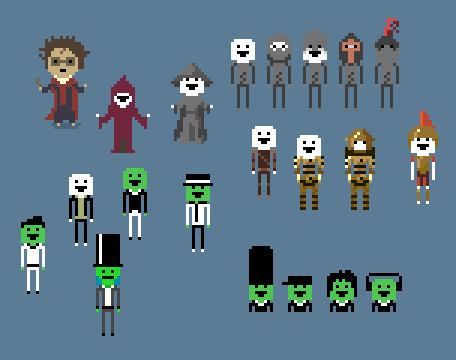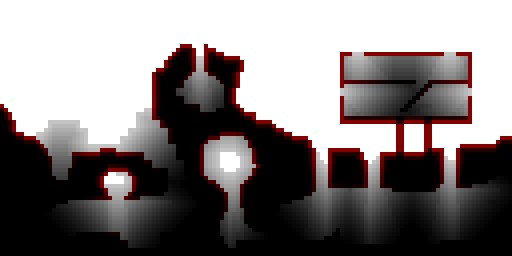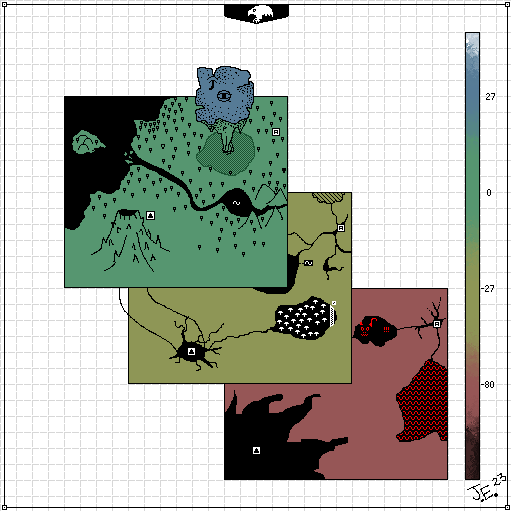(This is the Day 6 entry for the 30 day world building challenge.)
Excerpt from St. P. Naturality Guidebook…
Although Oed has become dominated by the “intelligent” species, leading to the inevitable extinction of much of its wondrous wildlife, a considerable number of species still exist. Magiks run astray have torn the planet’s weather system apart, leading to chaotic and unpredictable weather and a landscape that changes far more rapidly than evolution has catered for. Nonetheless, the species that remain dominate their niche and have learnt to survive in these wildly changing conditions. Restricting our attention to those in the fourth municipality (Figure ii), we see a number of unique and interesting lifeforms.

Of the ground creatures, the two most popular are the imp and the white rabbit. Don’t be convinced by the imp’s intelligent appearance, these creatures are as wild and primitive as the rest. Imps can often be seen scurrying out of their homes, holes dug into the dirt, and foraging for berries, bark, and bugs. Although imps can be eaten, they are not very tasty, and the difficulty of catching them means they are not hunted. The white rabbit, which can be seen bounding around the tundra and snow fields, is a herbivore and lives off the dry grasses that dominate the colder regions of the fourth municipality. The mystics assert that white rabbits visit ethereally-charged areas of the plains, and by following them, one can ascertain points of advantageous transcendence.
Of the air creatures, the zweibird is the rarest. Although with rich pink feathers, when it is in range it is hard to miss, fluttering and flittering about the trees and bushes, hunting for worms, bugs, and wyrm-bugs. The zweibird is uniquely biological, as reproduction in the female occurs not by giving birth but by spontaneously splitting into two new zweibirds, of equal size. A curiosity indeed! The mottled crow needs no explanation, it is seen everywhere in Oed, and is a scavenger. The eagal on the other hand, is one of Nature’s great species, vivid emerald feathers gleam in the sunlight, and a full span of its wings can rival that of a full grown person! The eagal is oft found perched on jutting cliff faces, high up in the mountains, where its perfect vision can search the ground for its prey, typically rabbits and zweibirds.
If roaming at night, one may come across the nightbird, a dark grey bird-like creature with fire-red eyes which glow at night. You may be tempted to flee, but don’t, the nightbird is harmful in appearance only, and feeds only on the bugs that are attracted by moonlight. However, the nightbird has a distant cousin, the firebird, which lives under the surface, closer to the core. It glows with the fire that runs through its veins, and is vicious towards anything which stumbles into its domain. If venturing deep underground, it is highly recommended you take the appropriate precautions and carry medical supplies for treating burns.
 Fashion in the fourth (municipality), is chaotic, anachronistic, and almost never practical. A lad of the ultra-violence persuasion has a range of close combat armour to choose from, fashioned from leather, iron, gold, ebony, steel, emerald, sandsteel, sunstone, paper, wood, kapur bark, and, well, practically anything that would resist a solid whack from a sawn-off claymore. The transcendant, the magikal and the soul-less, prefer lighter clothing, typically cloaks, bedsheets, or armour made from less dense materials, such as moonstone. This clothing is typically resonant with the wearer, amplifying whatever godless gift they have. And finally, the ultra-passive citizens of the fourth usually don’t wear armour, but prefer to wear whatever is the current style, from formal suits, shirts with white paints, gangster costumes, renaissance-era garb, whatever takes their fancy really. Head-wear or masks are often worn, from richly decorated feathered hats down to simple accessories, such as the +1 culture monocle.
Fashion in the fourth (municipality), is chaotic, anachronistic, and almost never practical. A lad of the ultra-violence persuasion has a range of close combat armour to choose from, fashioned from leather, iron, gold, ebony, steel, emerald, sandsteel, sunstone, paper, wood, kapur bark, and, well, practically anything that would resist a solid whack from a sawn-off claymore. The transcendant, the magikal and the soul-less, prefer lighter clothing, typically cloaks, bedsheets, or armour made from less dense materials, such as moonstone. This clothing is typically resonant with the wearer, amplifying whatever godless gift they have. And finally, the ultra-passive citizens of the fourth usually don’t wear armour, but prefer to wear whatever is the current style, from formal suits, shirts with white paints, gangster costumes, renaissance-era garb, whatever takes their fancy really. Head-wear or masks are often worn, from richly decorated feathered hats down to simple accessories, such as the +1 culture monocle.







